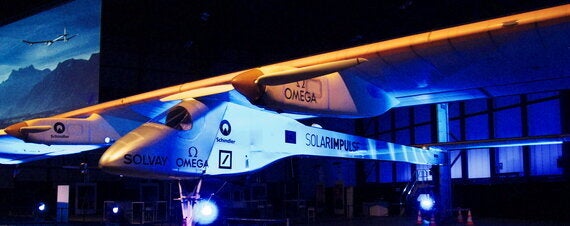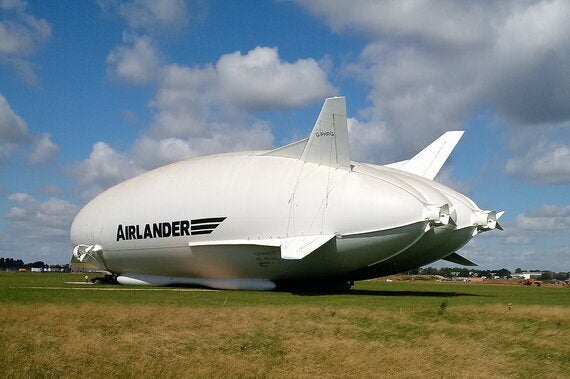The human race has always had an insatiable appetite for exploration; despite the fact maps used to say "there be dragons here", or feared that we'd sail off the edge, heading over the horizon is in our nature. Jump 1000 years later and we're still doing it. Everywhere on the globe is now reachable by air travel, but with rising population comes rising demand...
When you look back it's plain to see we've come a long way in regards to traversing our world. Before the innovation of commercial flight you'd have to dedicate weeks of your life just to see faraway places; true the lack of convenience was pacified by a sense of adventure, but now it seems we've grown all too accustomed to giant winged tubes in the sky.
Air travel is one of the biggest carbon foot-printed industries in the world, spewing out more carbon per passenger in one transatlantic flight than a car does in one year, and this Earth-warming industry is facilitated almost everywhere on the planet. In fact there are only 5 countries that don't have airports, yet are surrounded by neighbours that do.
This is undoubtedly a huge problem, so much so that making the industry greener was a nominated category for the 2014 Longitude Prize (a £10million prize dedicated to tackling world issues). The prize went to antibiotic resistance in the end, a highly relevant global issue; however this left us to continue our business-as-usual flight habits. Flying has become more fuel efficient over the years, but with huge expansion projected for the industry it will still remain an unsustainable commodity unless we innovate. But two major technological advances over the past 2 years have brought a clean air-traffic future much closer to reality.
Solar Impulse

Flickr | Melissa
One of these innovations was the development of a solar plane. Founded by pilots Bertrand Piccard and Andre Borschberg, Solar Impulse was made to explore the possible future of aviation as well as promote the general use of renewable alternatives across the globe.
Solar Impulse uses lightweight solar panels in conjunction to a battery array, meaning it has no fuel restraints and can even fly at night. In 2015 the plane smashed an aviation record by setting the longest solar flight in history; flying from Nagoya to Hawaii over 5 days. This world record was achieved on the 8th leg of an attempted solar flight around the world, and in July 2016 both pilots achieved the first solar-powered circumnavigation of the Earth, clocking up 40,000km and 500 flight hours between them. This flight was at the very frontier of solar powered flight, and despite facing unprecedented challenges, still managed to prevail.
This accomplishment is seen as a testament to the technical, moral and financial advantages renewable energy sources possess as a whole. Granted the costs of mass producing solar-powered passenger planes may be daunting, especially in the infancy of the application of such tech; in fact Piccard stated Solar Impulse "was not built to carry passengers, but to carry messages" (and couldn't have achieved its aim better), but considering that the industry's current annual jet fuel costs and carbon footprint would be negated, it may be a worthy step to take after all.
Airlander10

Flickr | Airwolfhound
This frankly alien looking ship is the second innovation. Sizing up to ten storeys high and a hull volume of 1,340,000 cubic ft it is the largest flying vehicle in current use, and utilises the best of three aeronautical technologies to make it 'hyper-efficient'.
The airship's helium filled, lightweight hull provides 40% of the lift with 4 V8 diesel engines picking up the slack, making it highly fuel efficient. However, with today's innovations in renewable technologies, it could feasibly be powered greenly and on-the-go, similar to Solar Impulse. The airship can already stay airborne for 2 weeks unmanned (5 days with a crew), but cancelling out the need to refuel would allow much longer voyages and further access to the planet, especially to remote areas, having the potential to be a floating research and surveillance station.
Not only does the Airlander10 have scientific applications, but can also function as a passenger aircraft. In fact, given the scale of the airship, it could far exceed the passenger limits of current aircraft whilst consuming far less fuel. And it wouldn't take a stretch of the imagination to see people living on one for extended periods, like a floating cruise ship.
Although commercial passenger flight could be revolutionised by Airlander10 and Solar Impulse, the huge air miles of cargo transportation still pose a problem. The size of the airship in comparison to its carbon-footprint is both ecological and economical, and with a 39,168 litre main payload space, plus extra rear space and external carrying capacity, Airlander10 could easily be a more sustainable medium for the cargo-shipping industry.
The applications of both these inventions are widespread and exciting, but if we were to channel them into addressing the current climate issues commercial travel and shipping present, we would be closer to a greener, more sustainable, clean-conscience way of how we see the world.
By Thomas Phillips - Online Journalism Intern
Frontier runs conservation, development, teaching and adventure travel projects in over 50 countries worldwide - so join us and explore the world!
